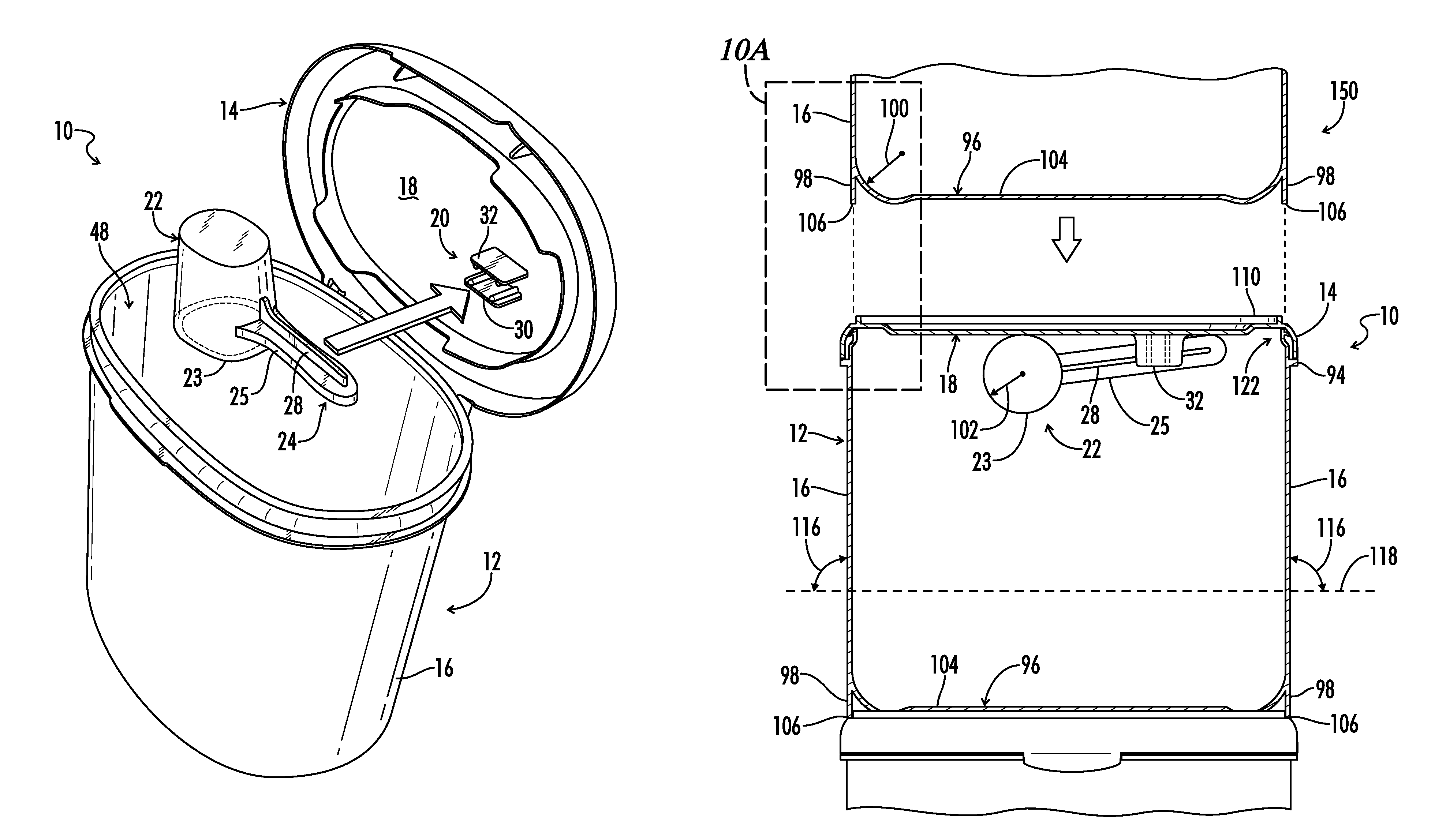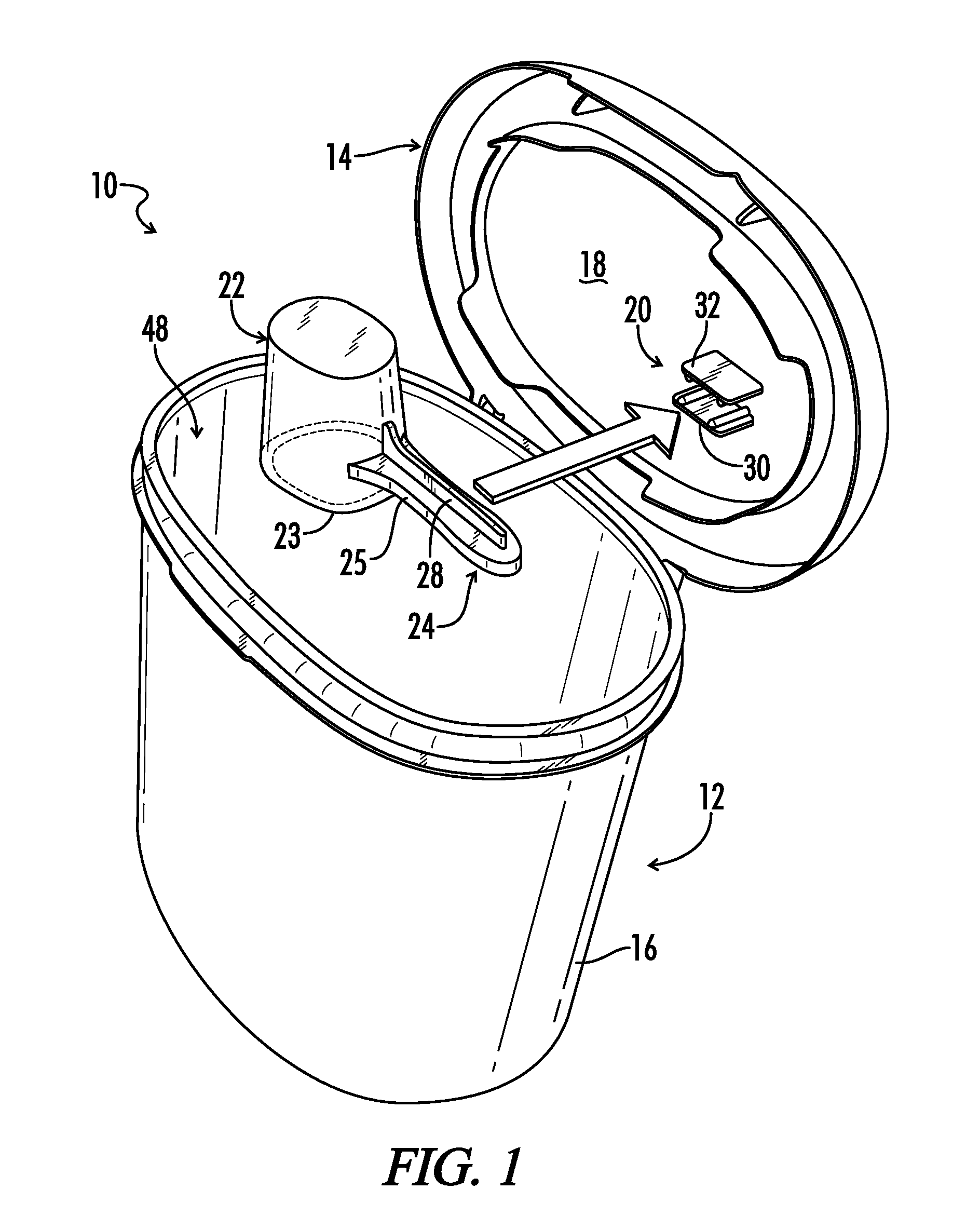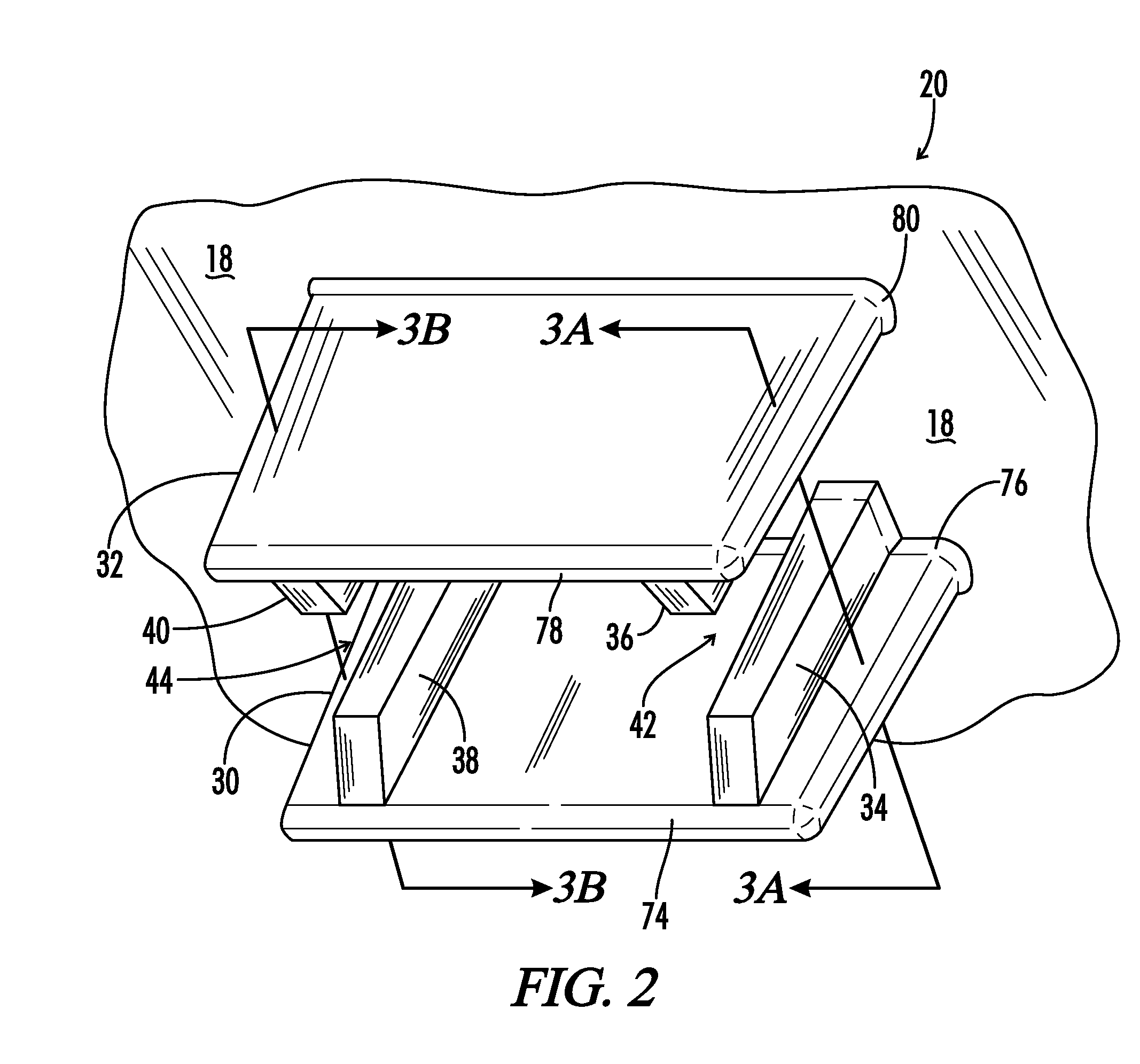Container and closure
a technology of container and lid, applied in the field of containers, can solve the problems of contaminated stored contents, contaminated storage contents, and undesirable contamination of stored products, and achieve the effects of reducing the risk of contamination
- Summary
- Abstract
- Description
- Claims
- Application Information
AI Technical Summary
Benefits of technology
Problems solved by technology
Method used
Image
Examples
Embodiment Construction
[0031]Referring now to the drawings and particularly to FIG. 1, a perspective view of a container in an open position is shown and generally designated by the numeral 10. In the drawings, not all reference numbers are included in each drawing, for the sake of clarity. In addition, positional terms such as “upper,”“lower,”“side,”“top,”“bottom,”“vertical,”“horizontal,” etc. refer to the container when in the orientation shown in the drawing. The skilled artisan will recognize that containers in accordance with the present disclosure can assume different orientations when in use.
[0032]As seen in FIG. 1, container 10 includes a container body 12 having a side wall 16. Side wall 16 defines an opening 48 in container body 12. In one embodiment, side wall 16 forms an oval cross-sectional shape. It is understood that other embodiments of container body 12 can include other cross-sectional shapes, including circular, rectangular, or other linear or curvilinear shapes not shown. A closure, or...
PUM
 Login to View More
Login to View More Abstract
Description
Claims
Application Information
 Login to View More
Login to View More - R&D
- Intellectual Property
- Life Sciences
- Materials
- Tech Scout
- Unparalleled Data Quality
- Higher Quality Content
- 60% Fewer Hallucinations
Browse by: Latest US Patents, China's latest patents, Technical Efficacy Thesaurus, Application Domain, Technology Topic, Popular Technical Reports.
© 2025 PatSnap. All rights reserved.Legal|Privacy policy|Modern Slavery Act Transparency Statement|Sitemap|About US| Contact US: help@patsnap.com



